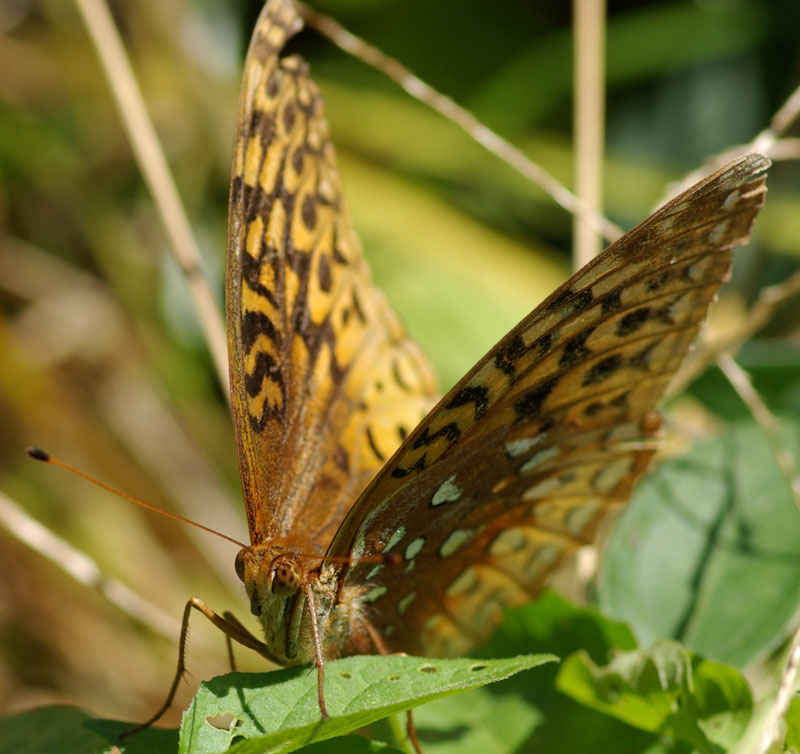
September 18th, 2008
Great Spangled Fritillary (Speyeria cybele)
Pentax K10D with 100mm macro, 1/350 at f/5.6
When I was a child, I did as children do, and chased butterflies in the fields. Forty years later the fascination, if not the boundless energy, still remains.
Is there any logic to the flight of a butterfly? It certainly is not a straight line. Are they following a physically determined path of least action, surfing unseen micro eddies or vortices in the air to conserve their energy? Or are they showing their overflowing exuberance, feasting in a field of flowers, unable to make (and adhere to) a single choice? I know, as child, I was disposed to the latter, perhaps explaining my fondness for butterfly chasing.
In any case I’m older and wiser today. I don’t chase butterflies. I photograph them. Indeed, chasing and photographing are at cross purposes and nearly incompatible. Photographing butterflies is a patient, quiet task. The technique is straightforward and consists of three easy steps:
- Go sit among the flowers.
- Don’t move.
- Wait.
Let the butterflies come to you. As Ptolemy crumbled before the Copernican revolution, this critical change in perspective makes all the difference. Give it a try!
Small creatures that travel in a straight line are easiest to catch and eat, so most everything has evolved to dodge, even when there’s no obvious predator. It’s a world of wide receivers and running backs.
Maybe you subconciously like this because it’s a complete change from technical standards, which should be utterly predictable and catchable – giafly.
Awesome picture Rob.
I prefer to mount them on my wall. As a matter of fact, one of my Riker mounts has that exact butterfly.
Which is pretty good, because I’ve only ever seen a few like that. They just aren’t that common where I live.
My favorite is still the Buckeye, though. They’re very weak fliers, but they’re incredibly pretty.